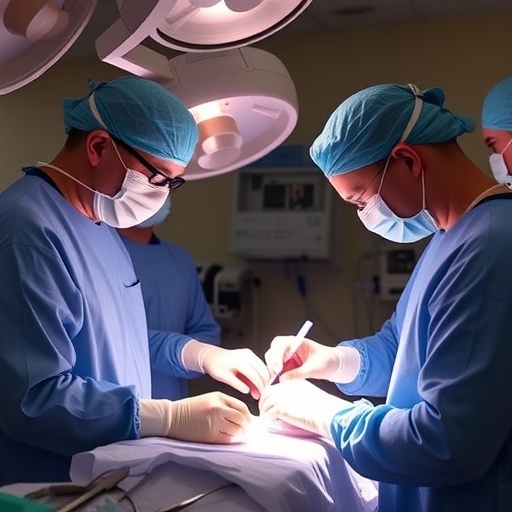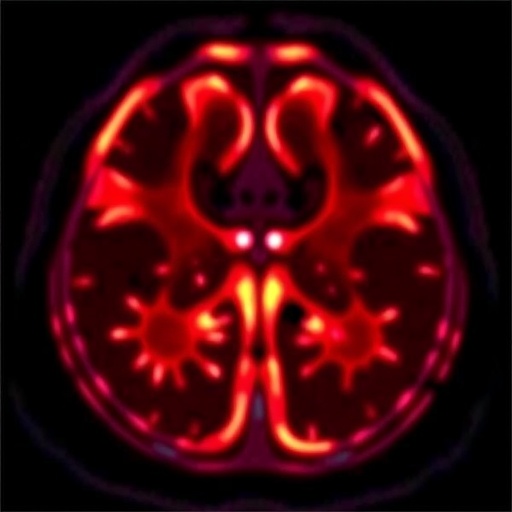In the evolving landscape of oncology, the treatment of pancreatic ductal adenocarcinoma (PDAC) remains one of the most daunting challenges faced by practitioners and researchers alike. This aggressive malignancy is notorious for its late presentation and dismal prognosis, traditionally classified as unresectable upon diagnosis in many patients. In the recent study conducted by Su et al., there is a critical examination of treatment strategies for patients who were initially deemed inoperable but underwent conversion surgery after chemotherapy.
The concepts surrounding conversion surgery are intriguing and represent a paradigm shift in the management of advanced pancreatic cancer. More specifically, this research outlines the outcomes of patients who transitioned to a surgical approach following a regimen of chemotherapy. This method stands as a beacon of hope, allowing for the potential re-evaluation of previously unmanageable cases. The investigation was carried out within a Taiwanese cohort, highlighting regional practices in the treatment of PDAC and the complexities involved in such a multifaceted disease.
The retrospective nature of the cohort study affords a unique perspective, allowing researchers to draw conclusions based on real-world clinical outcomes, rather than theoretical postulates. Amid a backdrop of evolving treatment protocols, the paper posits that patient stratification based on response to initial chemotherapy may guide decisions regarding the feasibility of subsequent surgical intervention. This nuanced understanding of the cancer’s biology and response to systemic therapy underpins the study’s conclusions, marking a significant consideration in the ongoing discourse about treating this malignancy.
One of the cornerstones of the study highlights patient selection criteria. Only individuals who showed measurable improvement following chemotherapy were considered for conversion surgery. This meticulous selection is crucial, as it aims to optimize surgical outcomes while minimizing overtreatment in non-responsive patients. The authors emphasize that surgical intervention carries inherent risks, and the methodology employed ensures that only those likely to benefit ultimately proceed to surgery.
The study’s findings reveal a promising trajectory for a subset of patients who experienced significant tumor shrinkage. Data indicated that a portion of these patients could successfully undergo resection, significantly impacting their overall survival rates. Detailed statistics within the study reveal survival odds that starkly contrast with those patients who were unable to receive surgical intervention. The implications of these findings could be monumental, potentially redefining how oncologists approach treatment protocols for PDAC globally.
Moreover, the treatment regimens varied among patients, encompassing various chemotherapeutic agents and combinations. A notable point of discussion within the study is the efficacy of different chemotherapy regimens, which could influence conversion rates to surgical candidacy. The authors engage in a thorough analysis of how specific histological and molecular characteristics of tumors might predict responsiveness to chemotherapy, further elucidating the complexities involved in managing pancreatic cancer.
In evaluating the safety and tolerability of conversion surgery post-chemotherapy, the research also addresses the complications that arise from such procedures. While patients who underwent surgery demonstrated considerable survival benefits, the potential for perioperative complications looms large. The authors take time to dissect these risks, offering insights into postoperative recovery trajectories and quality of life assessments, further highlighting the balance that oncologists must strike between aggressive treatment and patient welfare.
As the study encapsulates the real-world implications of these findings, the researchers advocate for an interdisciplinary approach in managing pancreatic cancer. The collaboration between medical oncologists, surgical teams, radiologists, and pathologists is imperative to tailor treatment plans effectively. This paradigm of integrated care frames a holistic perspective on patient outcomes, emphasizing the need for cohesive strategies when faced with such a complex disease.
Furthermore, the retrospective nature of the analysis paves the way for future prospective studies. The authors recommend that additional investigations be launched to explore the prospect of validating their findings in larger cohorts across diverse geographical locations. Given the varied responses to treatment and genetic diversity among populations, the need for broader studies is underscored as essential to generalizability of the results.
The discourse surrounding the treatment of PDAC continues to evolve, necessitating ongoing research and exploration of innovative approaches. The emergence of personalized medicine, allied with the insights gained from the study, is poised to revolutionize how healthcare providers diagnose and manage pancreatic cancer in the future. Understanding tumor biology at a molecular level will inevitably influence treatment algorithms, steering the course of therapy in more effective, patient-tailored directions.
Patient education and shared decision-making must be woven into the fabric of treatment planning as well. As patients grapple with their diagnosis and treatment options, the role of clear communication about the risks and benefits of conversion surgery becomes paramount. Health professionals must engage their patients actively in discussions around treatment pathways, empowering them to take an active role in their care.
Ultimately, the study by Su et al. signifies hope in a field traditionally marked by poor outcomes. By amplifying awareness of the potential benefits of conversion surgery following chemotherapy for initially unresectable metastatic pancreatic ductal adenocarcinoma, the research offers a narrative of resilience for patients facing this formidable disease. This new understanding may not only influence clinical practices but also inspire further research inquiries, creating a ripple effect that could lead to enhanced patient care strategies in the years to come.
In summary, the exploration of conversion surgery as a viable option for patients with PDAC post-chemotherapy underscores the importance of innovation in cancer care. The careful scrutiny of treatment efficacy and individual patient response serves as a critical step towards more personalized, effective management techniques. As the medical community navigates the ever-evolving landscape of oncology, studies like that of Su et al. provide a pivotal foundation for future exploration, understanding, and treatment of pancreatic cancer.
Subject of Research: Conversion surgery following chemotherapy for metastatic pancreatic ductal adenocarcinoma.
Article Title: Outcomes of conversion surgery following chemotherapy for initially unresectable metastatic pancreatic ductal adenocarcinoma: a retrospective cohort study in Taiwan.
Article References:
Su, PJ., Lu, WH., Liao, TK. et al. Outcomes of conversion surgery following chemotherapy for initially unresectable metastatic pancreatic ductal adenocarcinoma: a retrospective cohort study in Taiwan.
J Cancer Res Clin Oncol 151, 308 (2025). https://doi.org/10.1007/s00432-025-06353-0
Image Credits: AI Generated
DOI: 10.1007/s00432-025-06353-0
Keywords: pancreatic cancer, conversion surgery, chemotherapy, metastatic, PDAC, survival outcomes, interdisciplinary approach.
Tags: challenges in managing advanced pancreatic cancerchemotherapy and pancreatic ductal adenocarcinomaconversion surgery for pancreatic cancerhope for previously unmanageable pancreatic casesoutcomes of conversion surgery post-chemotherapyparadigm shift in pancreatic cancer managementpatient stratification in cancer treatmentreal-world clinical outcomes in PDACregional practices in pancreatic cancer treatmentretrospective studies in oncologysurgical approaches for advanced malignanciestreatment strategies for unresectable PDAC





